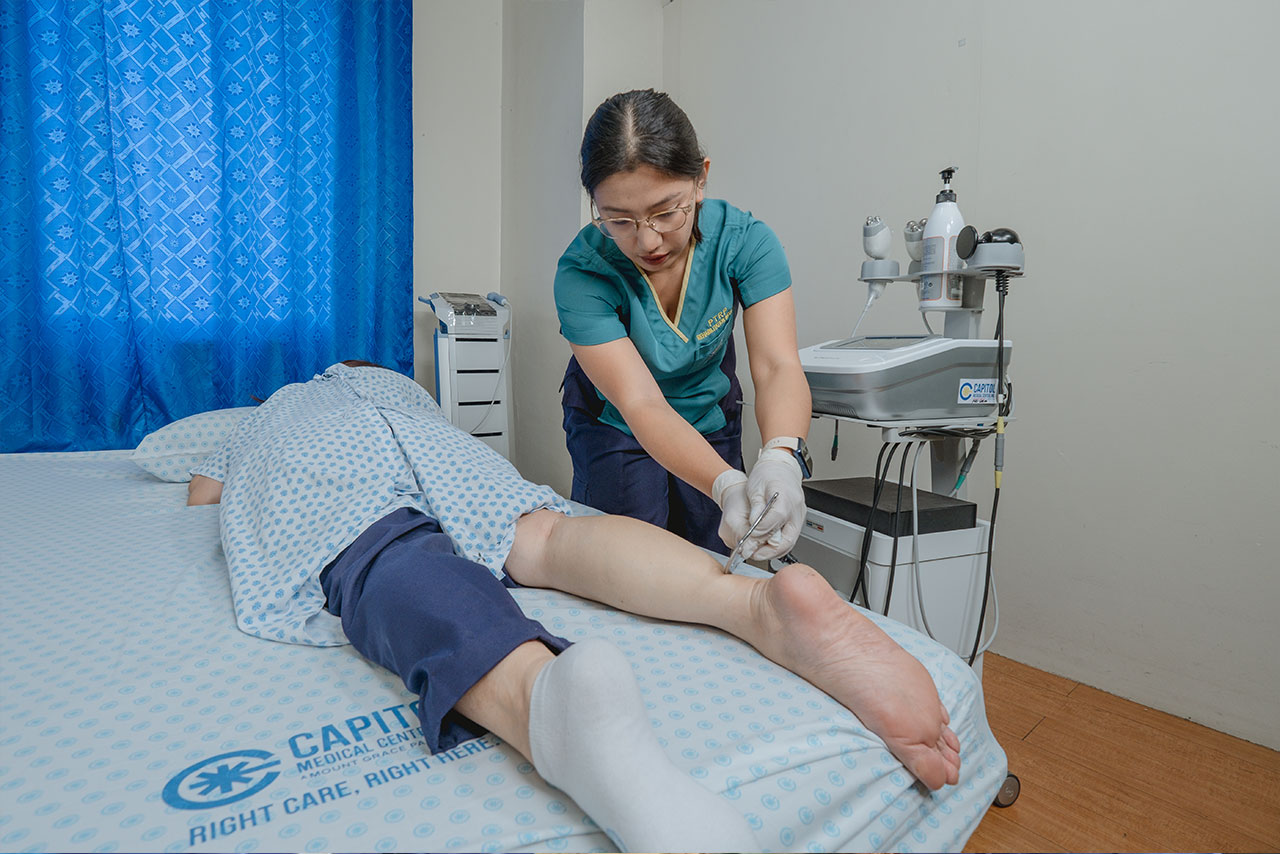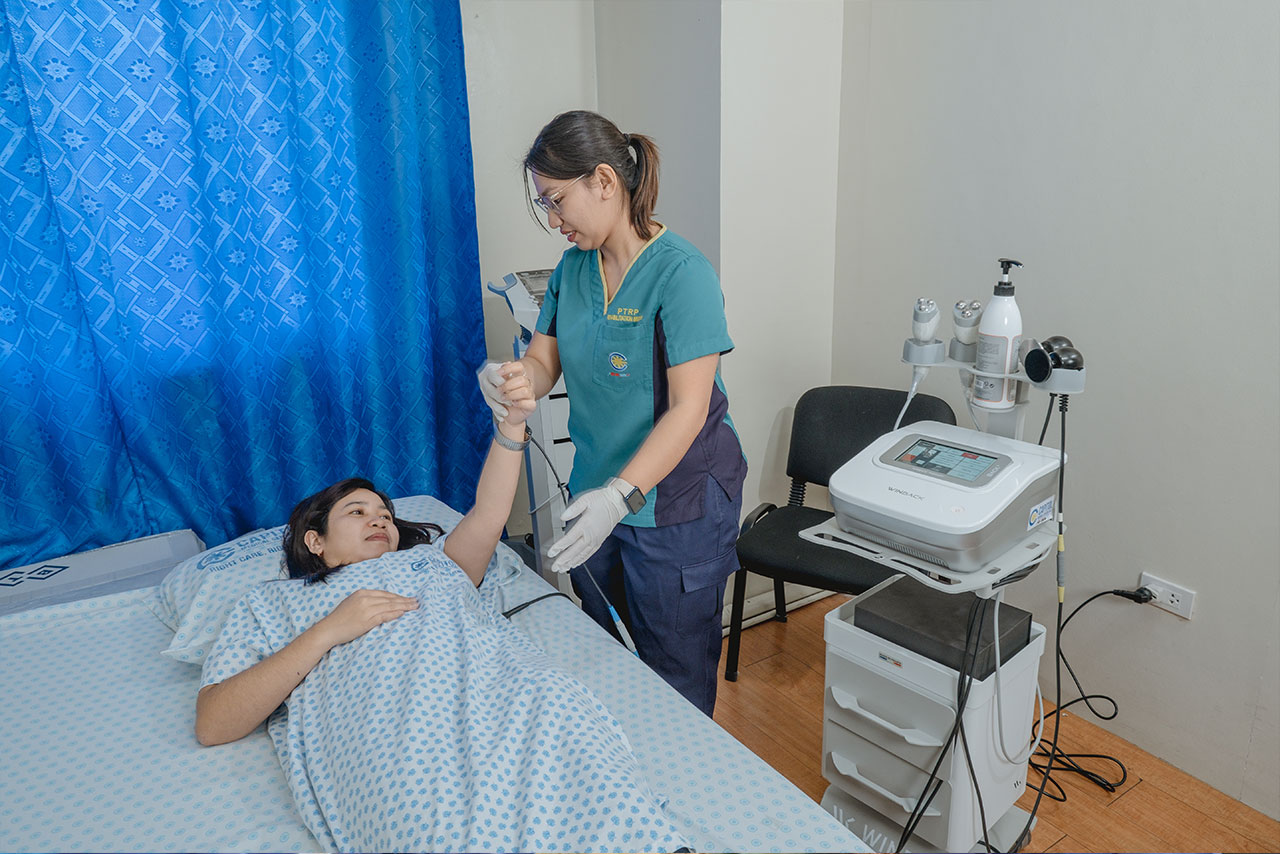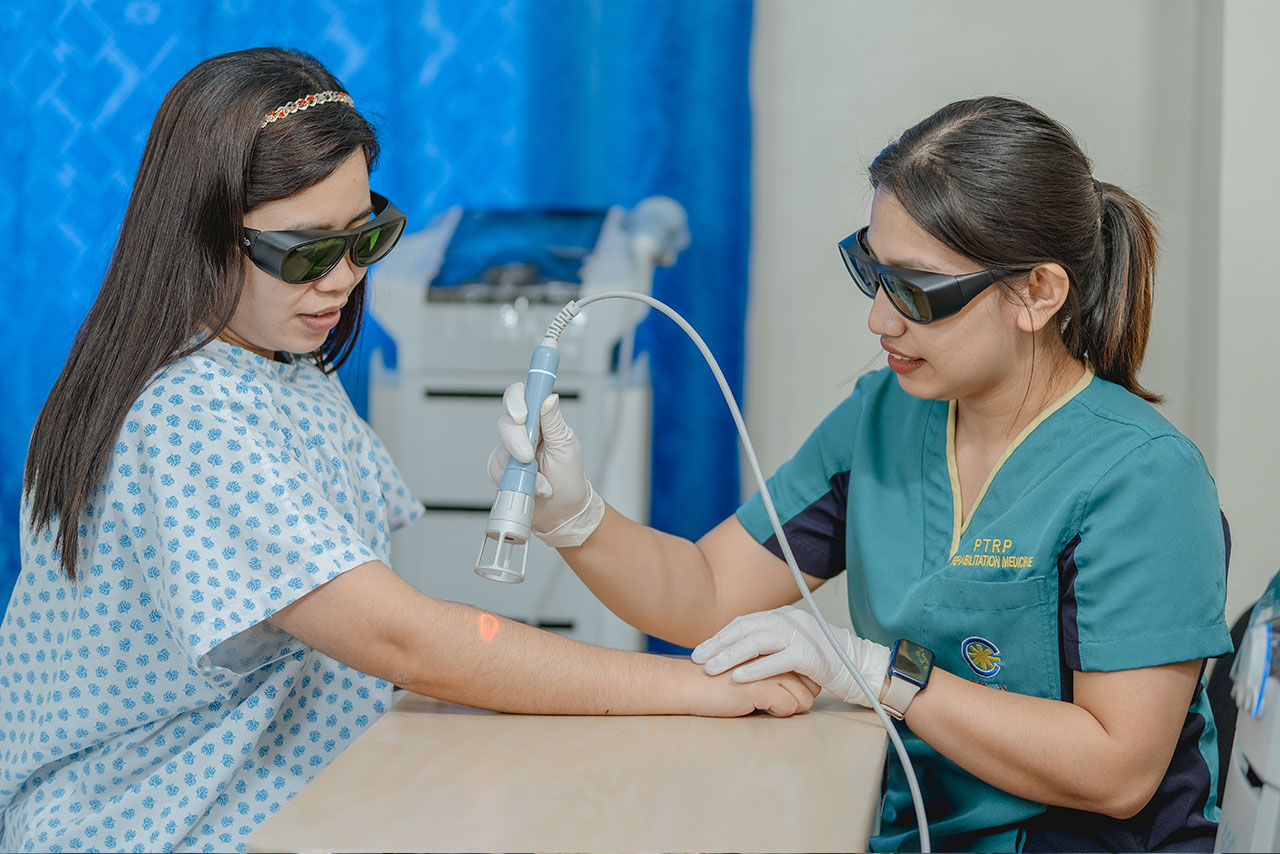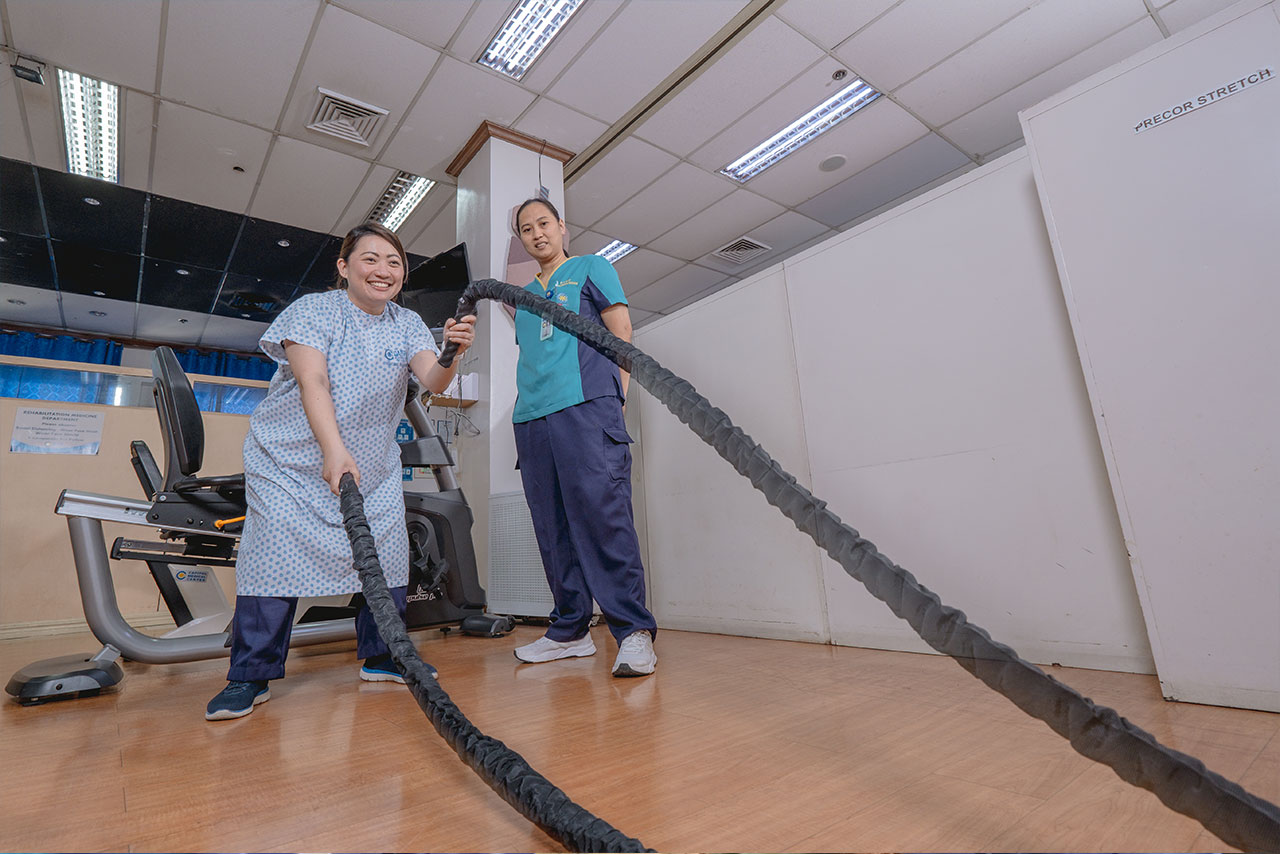Clinic Schedule:




Department of Rehabilitation Medicine
The term “rehabilitation” may mean different things to different people. To some, it may mean overcoming an addiction, or to others: recovering from a long-term disease. What does rehabilitation, particularly physical rehabilitation, really mean?
The World Health Organization (WHO) defines rehabilitation as “a set of interventions designed to optimize functioning and reduce disability in individuals with health conditions in interaction with their environment”.
According to the American Association of Physical Medicine and Rehabilitation (AAPMR), Physical Medicine and Rehabilitation (PM&R), also called Physiatry or Rehabilitation Medicine, “aims to enhance and restore functional ability and quality of life to those with physical impairments or disabilities affecting the brain, spinal cord, nerves, bones, joints, ligaments, muscles, and tendons.”
Your Rehabilitation Team
Capitol Medical Center, through its Rehabilitation Medicine department, offers a multi-disciplinary approach to your rehabilitation needs. Different departments and professionals, such as Rehab Doctors/Specialists, Physical Therapists, and Occupational therapists, work to provide the best quality care they can give to all of their patients.
Rehabilitation Setting
Here in Capitol Medical Center, the Rehabilitation Medicine Department offers its services as an in-patient (while confined within the hospital), out-patient (appointment at the Rehab facility), and to the comfort of your own homes (through Rehab-on-Wheels and Telerehabilitation).
When Do I Start Physical Rehabilitation?
Physical Rehabilitation can be done as preventive care, post-operation or right after your surgery, and even as maintenance to preserve your optimal condition.
What do I do in Physical Rehabilitation?
List of Services
- Physical Therapy (PT) - Physical Therapy helps patients develop, maintain and restore their maximum functional ability. This service helps to improve the quality of life for patients with neuromuscular, orthopedic and cardiopulmonary issues through individualized programs such as, but not limited to, pain relief, muscle strengthening, balance training, joint mobility and back care.
- Occupational Therapy (OT) - Occupational Therapy helps patients recover, maintain and improve the patient's ability to perform activities of daily living. This involves fine and gross motor skills. Training programs and activities are individualized for patients with Developmental Delay, Cognitive or Perceptual Problems, Dysphagia (swallowing disorders) and patients who have conditions that may need splinting.
- Cardiac Rehabilitation - Cardiac Rehabilitation offers programs that are designed to promote a healthy lifestyle, prevent disease and help patients recover from a cardiovascular event and improve outcomes of cardiac surgery and other interventions.
- Rehab-on-Wheels - Rehab-on-Wheels offers home care rehabilitation service that allows patients to regain productivity and develop independence with daily activities in a convenient and comfortable setting at home. Families are also able to be closely involved in the rehabilitation process.
- Telerehabilitation - This service offers virtual Physical and Occupational therapy as an alternative to provide rehabilitation services to patients at a distance.
- Interventional Musculoskeletal Ultrasound - Musculoskeletal (MSK) Ultrasound imaging is a specialized exam used to specifically look at tendons, muscles, joints and nerves throughout the body. It is a procedure that helps diagnose and aids treatment of neuromuscular conditions. MSK Ultrasound Imaging is safe and does not use radiation. The application of ultrasound in musculoskeletal injection helps improve the accuracy in administering medications and joint lubricants under direct visualization. MSK Ultrasound enables quicker diagnostic interpretations and promotes earlier recovery of the patients from their condition. Here in CMC Rehab Med, the procedure is performed by Physiatrists who are also specialists in musculoskeletal sonography.
The Department caters to patients suffering from a wide range of conditions such as, but not restricted to:
- Arthritis
- Arthroplasty
- Cardiovascular Disease
- Carpal Tunnel Syndrome
- Cardiopulmonary Cases
- Cerebrovascular Accident (Stroke)
- Hand Injuries
- Ligamentous Injuries
- Movement Disorders
- Muscular Dysfunctions
- Nerve Entrapment
- Orthopedic Conditions
- Osteoporosis
- Post-COVID Deconditioning Syndrome
- Sciatica
- Shoulder Injuries
- Sports Injuries
- Vertigo
Team of Doctors
Physiatrists are physicians who specialize in muscles, bones, nerves and pain disorder who work closely with the members of the Rehabilitation Team (Physical Therapists, Occupational Therapists and Rehab Aide) to ensure the best possible care is given to patients.
- Teresita Consuelo Palileo-Macalalad, MD, MBA Health Fellow, Philippine Academy of Rehabilitation Medicine Diplomate, Philippine Board of Rehabilitation
- Maria Lourdes Corazon F. Tapang, MD, MPH Fellow, Philippine Academy of Rehabilitation Medicine Diplomate, Philippine Board of Rehabilitation
- Maria Teresa Oquiñena MD, DPBRM, FPARMDiplomate, Philippine Board of Rehabilitation Medicine Fellow, Philippine Academy of Rehabilitation Medicine
- Jan-Tyrone C. Cabrera, MD, FPARM Sports Medicine, Electrodiagnostics, Interventional Musculoskeletal and Neuromuscular Ultrasonology and Rehabilitation

